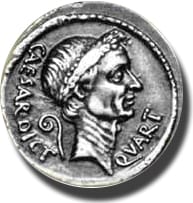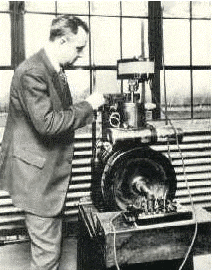A Taste for Lead

For winemakers in the Roman Empire, nothing but lead would do. When boiling crushed grapes, Roman vintners insisted on using lead pots or lead-lined copper kettles. “For, in the boiling,” wrote Roman winemaker Columella, “brazen vessels throw off copper rust which has a disagreeable flavor.” Lead’s sweet overtones, by contrast, were thought to add complementary flavors to wine and to food as well.
The metal enhanced one-fifth of the 450 recipes in the Roman Apician Cookbook, a collection of first through fifth century recipes attributed to gastrophiles associated with Apicius, the famous Roman gourmet. From the Middle Ages on, people put lead acetate or “sugar of lead” into wine and other foods to make them sweeter.
Lead touched many areas of Roman life. It made up pipes and dishes, cosmetics and coins, bullets and paints. Eventually, as a host of mysterious maladies became more common, some Romans began to suspect a connection between the metal and these illnesses. But the culture’s habits never changed, and some historians believe that many among the Roman aristocracy suffered from lead poisoning. Julius Caesar, for example, managed to father only one child, even though he enjoyed women as much as he enjoyed wine. His successor, Caesar Augustus, was reported to be completely sterile. Some scholars suggest that lead could have been the culprit for the condition of both men and a contributing factor to the fall of the Roman Empire.
A form of lead intoxication known as saturnine gout takes its name from ancient Rome. Saturn was a demonic god, a gloomy and sluggish figure who ate his own children. The Romans noticed similarities between symptoms of this disorder and the irritable god, and named the disease after him. Scientists have since learned that while there are similarities between saturnine gout and primary gout – such as elevated blood uric acid levels – these are in fact two distinct diseases.
A Versatile Metal
The Romans were not the only culture to make liberal use of lead – for better and for worse. One of the first metals to be extracted from natural ores more than 8,000 years ago, lead lent itself to many uses in ancient civilizations. Abundant in the Earth’s crust, lead is soft and easy to work with because it melts at a relatively low temperature. It also resists corrosion and proves durable over time.
The Romans used the metal extensively in building the first municipal plumbing systems. This use is suggested by lead’s chemical symbol, Pb, which is derived from the Latin word for lead, “plumbum.” Lead pipes have been found still perfectly intact, inscribed with the insignia of Roman emperors.

Lead was also used widely for fashioning decorative objects. The oldest known lead-containing object made by human hands is a small statue found in Turkey, from 6,500 B.C. Egyptian Pharaohs between 3,000 and 4,000 B.C. used lead to glaze pottery. Lead was useful as well in construction. The Babylonians and the Assyrians used soldered lead sheets to fasten bolts and construct buildings. The Chinese used lead to make coins 4,000 years ago, as did the ancient Greeks and Romans. Early warriors made bullets out of it, and gladiators covered their fists with leaden knuckles.
Lead found new uses in the one of the fifteenth century’s greatest advancements, the printing press, where it was used to produce moveable type. During this period, stained glass windows held together by lead frames decorated medieval churches, and architects used lead to seal spaces between stone blocks and to frame roof installations. Into the twentieth century, lead was also used in the production of guns, cannons and ammunition. To many people, the metal’s usefulness seemed endless.
Culprit with a History

Yet, even in ancient times, lead had its critics. In 14 B.C., the Roman architect Vitruvius noted pale complexions and other ailments in workers who used lead on the job. In his book De Architectura, he suggested that when water moves through leaded pipes, “the lead receives the current of air, the fumes from it occupy the members of the body, and burning them thereupon, rob the limbs of the virtues of the blood. Therefore, it seems that water should not be brought in lead pipes if we desire it to be wholesome.” The warning went unheeded.
In 370 B.C, the Greek physician Hippocrates described colic, or upset stomach, in a man who was a metal worker. In the first century A.D., Dioscorides, another Greek physician, noticed that exposure to lead could cause paralysis and delirium in addition to intestinal problems and swelling. References to paralysis in lead-exposed miners increased in Europe in the 1600s, as did reports of colic in wine-drinkers. As reports such as these became more widespread, some began taking advantage of lead’s toxicity. Members of the French nobility, for example, called lead “poudre de la succession”-succession powder- a reference to its poisonous potency.
Recent chemical analyses suggest that lead poisoning may have also contributed to the death of Ludwig van Beethoven in 1827 at age 57. Experts have long debated what caused the German composer’s poor health, digestive problems, abdominal pain, irritability and depression. Beethoven visited as many as 30 doctors looking for a cure. Chemical analyses of his hair made by scientists at the Health Research Institute in Naperville, Illinois, show evidence of poisoning from lead, according to a 2000 report.
Yet, even as lead’s dangers became increasingly obvious, the warning signs continued to be ignored.
Benjamin Franklin’s Warning

As the American colonists became enamored of lead in the early 1600s, reports of medical complications followed close behind. Benjamin Franklin wrote a letter to a friend in 1786, recalling his own encounters with the toxic metal. “The first Thing I remember of this kind, was a general Discourse in Boston when I was a Boy,” he wrote, “of a Complaint from North Carolina against New England Rum, that it poison’d their People, giving them the Dry Bellyach, with a Loss of the Use of their Limbs.”
Franklin goes on to describe his work in a London printing house in 1724. Two of his co-workers had already lost the use of their hands after years of holding leaded type close to the fire to dry. Their misfortunes, along “with a kind of obscure Pain that I had sometimes felt as it were in the Bones of my Hand when working over the Types made very hot, induc’d me to omit the Practice.”
Still, Franklin wrote, many workmen who slaved over fires with lead in their hands went home to eat without washing properly. That, in addition to inhaling smelting fumes and drinking rainwater that ran off roofs coated with leaded paint made lead poisoning a serious problem. Yet, he noted, people were reluctant to accept the fact. “You will observe with Concern how long a useful Truth may be known, and exist, before it is generally receiv’d and practis’d on.”
Despite Franklin’s warnings, the United States was, by the twentieth century, the world’s leading producer and consumer of refined lead. In a 1980 report, Lead in the Human Environment, the National Academy of Sciences estimated that the United States was using 1.3 million tons of lead each year – about 40 percent of the world’s supply. That figure translates to more than 11 pounds of lead per person each year – ten times more lead and lead-containing products than were used by the citizens of ancient Rome.
Most of that lead was used as an additive in gasoline and as the primary pigment in house paint. Smaller amounts were used as solder in plumbing and in other household objects.
Fueling Illness
In 1921, three General Motors engineers reported that adding a compound called tetraethyl lead to gasoline could quiet pinging motors and boost engine performance. Within two years the United States was pumping millions of gallons of leaded fuel into automobiles. In 1923 one of the General Motors engineers involved in developing leaded gas, a man named Thomas Midgley, spent several weeks fighting a severe illness. His condition was found to be related to lead exposure from his experiments with concentrated doses of liquid lead.
During the next year, as many as fifteen workers who helped produce the additive in refineries in Ohio and New Jersey fell sick and died. In most cases, mental derangement preceded death, and many of the workers died in straightjackets. Nearly 300 workers from three plants were pronounced psychotic, and workers and journalists soon began to call leaded fuel “loony gas.” For the next six decades, as many as 5,000 Americans died every year from lead poisoning, according to a 1995 EPA report.

The United States government did not begin to set standards for lead in gasoline until the early 1970s, when the U.S. Environmental Protection Agency began its long and difficult struggle to phase out leaded gasoline. In 1970, Congress passed the Clean Air Act. In 1975, U.S. automakers began equipping new model cars with catalytic converters designed to reduce pollution and run only on unleaded fuel. By 1986, the major phase-out of leaded gas in the U.S. was complete. The European Union caught up much later, finally banning leaded gasoline in 2000. Many developing nations still rely on leaded gas.
In the United States, eliminating leaded gasoline has led to dramatic improvements in the quality of the environment. Between 1975 and 1982, for example, ambient levels of lead in the air dropped by 64 percent, directly as a result of gasoline phase-outs.
But hazards remain. Leaded fuel lingered in America into the early1990s, and oil companies today continue to sell leaded gas for profit in the Third World. An estimated 7 million tons of lead burned in gasoline in the United States remains in our soil, water, air, and in the bodies of living creatures, according to a 2000 report in The Nation.
Curbing the Poison
Today, deteriorating lead-based paint is the major source of lead poisoning in American children, who are usually exposed as a result of eating chips of peeling or flaking house paint or the lead-contaminated soil or dust near lead-painted surfaces or near busy roads where decades of leaded gasoline use contaminated the soil.
By the 1920s, nearly all European countries had banned leaded paint. In the United States, President George Bush signed the Residential Lead-Based Paint Hazard Reduction Act in 1992, declaring the danger from lead-based paint a national crisis. But since lead does not decompose into harmless substances over time, the poison still lurks in the flaking, chipping paint and the lead-soldered pipes of aging houses. In 2000, the U.S. Department of Housing and Urban Development estimated that about 38 million houses and apartments built before 1978 contain some lead paint.
From a public health standpoint, results of federal lead-reduction efforts have been encouraging. During the 1970s and 1980s, Congress legislated limits on the lead content of soda cans and other products. In 1980, 47 percent of food and soda cans were soldered with lead. By 1990, this figure had dropped to less than 1 percent, according to a 1994 paper in the Journal of the American Medical Association. In 1995, the FDA banned the use of lead solder in the manufacture of food cans, and required the removal of all lead-soldered cans from grocery shelves by 1996, including imported lead-soldered cans. Although it is illegal, some food cans containing lead solder are still imported to the U.S.
Eliminating lead in paint, gasoline and other products, along with concentrated clean-up efforts, have led to radical reductions in the prevalence of lead poisoning in the United States. From 1978 to 1994, the mean blood-lead level of Americans dropped by 78 percent; since 1976 the proportion of the population with dangerously high blood lead levels (10 milligrams per deciliter or higher) dropped from almost 78 percent to slightly over 2 percent, according to a 1999-2000 report by the U.S. Centers for Disease Control and Prevention. Blood tests now exist to detect lead poisoning in people, and experts can test for lead in soil, paint, and other products.
Lead has not been completely eliminated from all household products, however. Mini-blinds, food cans, ceramic dishes, folk remedies, makeup, hair dyes, crayons and brightly painted toys – particularly imports from developing countries – can all contain doses of the insidious poison. But the most serious hazard is the lead that lingers in soil, especially in urban regions, and in the dust and chips from deteriorating house paint. Infants and toddlers bear the brunt of this exposure since they are more physiologically sensitive to the metal’s dangers and spend much of their time on the floor where lead-based paint chips and dust can collect on their toys and hands. Lead poisoning is a problem especially for urban and low-income families who tend to live in the oldest and most deteriorated housing.
Though the use of lead has been largely contained, its toxic legacy lingers on: Nearly half a million children in the United States have unacceptable levels of lead in their blood, according to a 1999-2000 report by the U.S. Center for Disease Control and Prevention.
Sources Include:
- National Referral Centre for Lead Poisoning in India;
- The Secret History of Lead by Jamie Lincoln Kitman, March 20, 2000, The Nation;
- Warnings Unheeded: A History of Child Lead Poisoning by Richard Rabin, MSPH, American Journal of Public Health, December 1989, Vol. 79, No. 12, 1989;
- The Paradox of Lead Poisoning Prevention by Bruce Lamphear, Science Vol 281, 11 Sept 1998;
- The Decline in Blood Lead Levels in the United States: The National Health and Nutrition Examination Surveys, JAMA, July 27, 1994, Vol. 272 No. 4;
- The Ancient Engineers by L. Sprague de Camp, Ballantine Books, NY 1960;
- Sick Caesars: Madness and Malady in Imperial Rome by Michael Grant, Barnes & Noble, Inc. NY 2000.
Emily Sohn Science Writer emilysohn@yahoo.com
